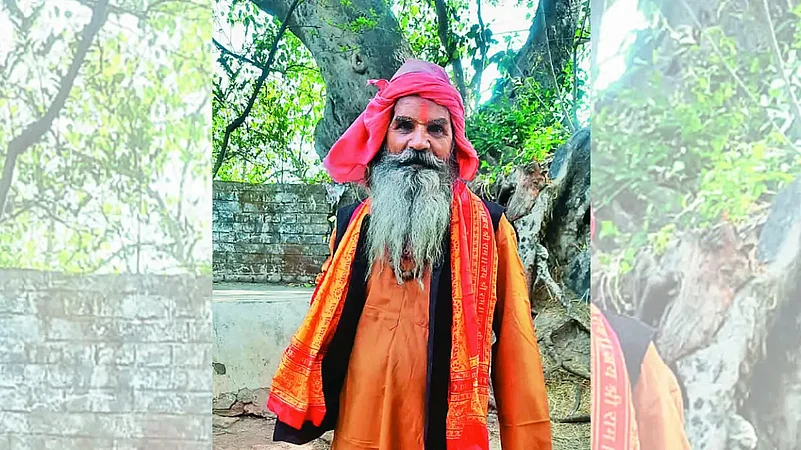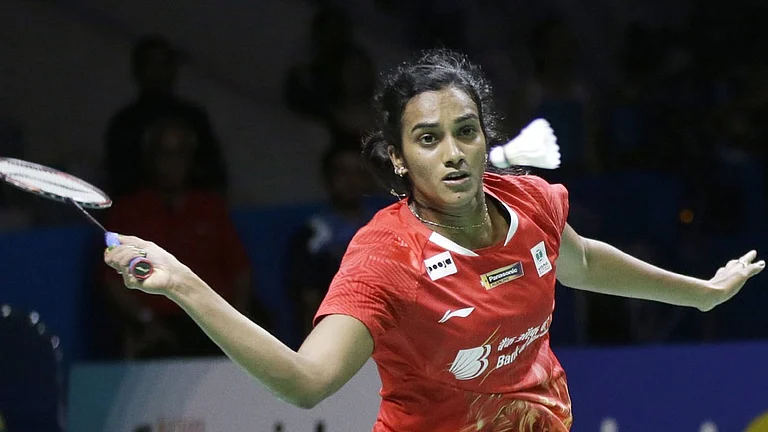Sitaram Das has some unusual friends. He calls out to them from this side of the pond, and they shuffle towards him. Seventeen years before, one of them grabbed him by the arm and dragged him inside the pond. The crocodile didn’t release him before badly damaging the arm, but it dented neither the friendship nor his efforts to save the reptile from poachers and villagers. With over 20 ponds, Kotmi Sonar village in Janjgir-Champa district of Chhattisgarh has been an abode of crocodiles for long. The old faqir, now in his 70s, has single-handedly ensured the peaceful cohabitation of man and the animal in the area.
A resident of Basti district in Uttar Pradesh, Sitaram took a pledge to remain unmarried in his 20s and spent some years at the Ram temple in Ayodhya. After a few years, he travelled along the Narmada before settling down near Jogiya pond in Kotmi Sonar. A small Janki temple served as his abode. “I first made friends with two crocodiles in a pond here. Soon, I became friends with all of them,” he tells Outlook. Though he doesn’t belong to any of the Hindu akhadas and crocodiles are his only companions, he soon became the temple’s sole priest.
“Jogiya pond became a hatchery of crocodiles after his arrival. When the water level in a pond went down, crocodiles shifted to the other. Sitaram helped them move easily on the ground,” says Rahul Singh, a retired joint director in the Department of Culture, Chhattisgarh. The resident from the neighbouring Akaltara has closely observed Sitaram’s life over the decades. Residents of Kotmi Sonar had some understanding of the reptile’s behaviour, but Sitaram became a self-taught expert as well as their guardian, calling the crocodiles “Narmadaji ka vahan (vehicle of the river Narmada)”. Since these reptiles often eat each other’s eggs and offspring, Sitaram guarded the newborns before they were ready to enter the pond. The crocodile population gradually increased in the region following his efforts, prompting the government to take note.
In 2006, the government inaugurated a crocodile park. The area now has over 150 crocodiles and almost all have received the care of Sitaram, who serves as a guard at the park. He has even named several of them, and can almost identify them all. Over the decades, he has learnt that crocodiles may withdraw themselves from the human eye for long before making a reappearance. “This one has emerged after a long time,” he points to a reptile emerging from the water. If no crocodile is visible around, visitors at the park often request him for a glimpse of the creature. Sitaram comes to the fence, calls his friends and they come rushing.
Sitaram has taught people that crocodiles are not their enemies. Ever since his arrival in the village, only a couple of deaths have taken place in man-crocodile conflict and a similar number of people were maimed—one was Sitaram himself. He lost an arm, but it didn’t deter his spirit. “I want my body to be offered to crocodiles after my death. I have lived for them. My death will also be for them,” he says.
(This appeared in the print edition as "The Man and The Crocodile")
Liked the story? Do you or your friends have a similar story to share about 'ordinary' Indians making a difference to the community? Write to us. If your story is as compelling, we'll feature it online. Click here to submit.


























